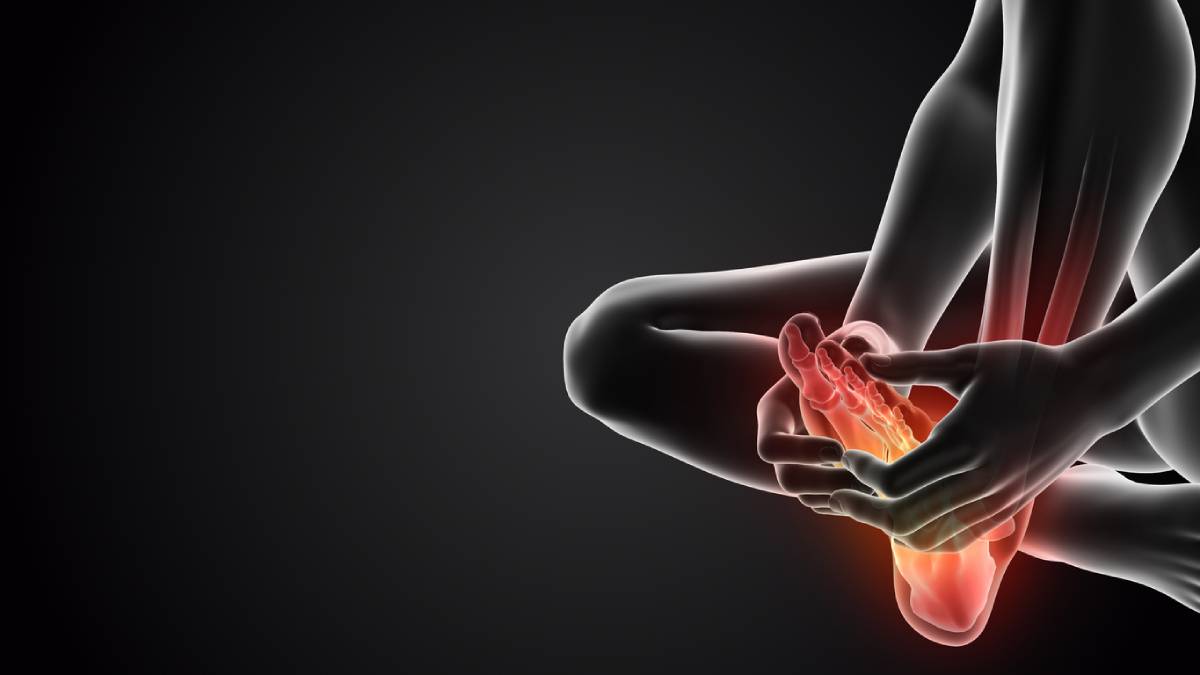When is heel pain actually nerve pain? Sometimes, it can be difficult to differentiate between simple heel pain and more serious nerve pain. The two oftentimes feel quite similar, until either becomes too severe.
For this reason, it’s important to stay aware of the ways in which nerve pain can express itself as heel pain, and vice versa. Knowing the difference can help you stay on top of the possibility of more severe conditions such as plantar fasciitis.
When Is Heel Pain Actually Nerve Pain?
If you’re suffering from heel pain that you suspect might be nerve-related or are just interested in knowing what to look for while researching plantar fasciitis outpatient surgery, take a look at this guide to recognize the differences.
Plantar Fasciitis vs. MEHPS
The vast majority of patients who experience pain in their inferior heel are likely experiencing pain related to plantar fasciitis. This is found to be the case approximately 90% of the time across cases. However, this statistic could be somewhat misleading, as many patients with heel pain actually experience this phenomenon from multiple sources.
The pain that comes from plantar fasciitis can be easily confused with the pain that accompanies a condition known as Multiple Eitology Heel Pain Syndrome, or MEHPS. In the case of the latter, there’s a strong chance that the source of their pain is solely neurogenic.
There are a few symptoms that oftentimes indicate the presence of a neurologic source for a patient’s feet. Some of the common ones include:
- The pain worsens after they are up on their feet
- The pain is of a burning nature
- They have pain at night when they are not bearing any weight
- They have used orthotic devices that didn’t help their condition.
One surefire way to tell whether or not plantar fasciitis is to blame for a patient’s heel pain is to press your thumb an apply pressure to an area called the medial calcaneal tubercle. If pain is present during this procedure, the source of the pain is likely plantar fasciitis. A podiatrist will assess your personal condition in order to determine whether or not this is the case happening with you.
Diagnostic Ultrasonography
The most accurate way to diagnose a patient’s heel pain is to utilize ultrasonography. This technology is considered the gold standard when it comes to diagnosing heel pain.
Ultrasonographies are quite safe and very effective. They do not have any radiation exposure and are quick and easy to use in a clinical setting. They also deliver their results quickly and accurately.
This type of technology is sufficiently important that many doctors consider themselves handicapped if they don’t have it at their disposal for diagnosis. For the patient, there’s no reason not to accept sonography as a preliminary method for diagnosing their heel pain.
Diagnosing Peripheral Nerve Blocks
When attempting to determine whether or not a patient’s heel pain has neurological origins, there are a variety of sophisticated techniques at the disposal of the medical practitioner. One is the aforementioned ultrasonography.
Another tool that can be utilized involves injecting a very small amount of lidocaine into the medial calcaneal nerve. This can determine whether calcaneal nerve entrapment is the generator of the patient’s heel pain.
Care must be taken to avoid affecting the other nerves that exist adjacent to the medial calcaneal nerve. In addition, the risks involved in this process are arguably unnecessary, given the relative safety of ultrasonography.
Tailoring Your Treatment for Plantar Fasciopathy
Although the causes of heel pain are oftentimes complex, the presence of advanced early-onset treatment options means that patients have more power than ever to diagnose and manage this issue from an early stage.
Many of the treatment options available now are relatively noninvasive and effective, meaning that there’s no real reason to wait to engage with the highest level of treatment available from a medical standpoint. Even heel pains with complex etiologies can be understood quite thoroughly when the most sophisticated medical methods are utilized.
This can help switch the paradigm of treatment from mismanaging long-term care to effectively resolving the issue in a short-term sense. Many would agree that this is preferable!
The Heel Pain Center for Californians
The Heel Pain Institute of California is the number one destination for resolving Heel Pain in the Southern California region. If you’re suffering from some type of heel pain and would like to know how to resolve it, then contact the heel pain institute today in order to schedule an appointment and resolve your issues.
